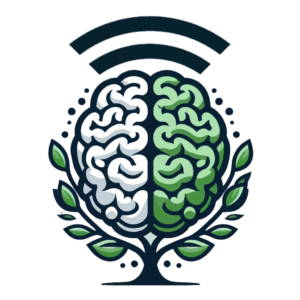In 2019, Vanderbilt University opened the Frist Center for Autism and Innovation. This research hub focuses on developing tools and technology to support individuals with autism in the workplace.
The center’s innovations include virtual reality (VR) for autism, offering resources like job simulations and problem-solving tests to help employers assess unique skills.
While these tools are helpful for adults with autism, research shows that virtual reality (VR) autism interventions can also improve social skills and emotional recognition in children and adolescents.

Download your FREE guide on
Assistive Communication Devices for Children with Autism
Why should you consider VR therapy for autism?
VR therapy for autism offers several unique advantages and can be tailored to each child’s needs. Both typically developing and children with neurodevelopmental disorders face significant challenges with social and emotional learning (SEL).
VR therapy provides realistic life scenarios in a safe, controlled environment, creating opportunities for children to practice new skills and apply them to real-life situations.
Virtual reality’s potential lies in its ability to create structured, predictable environments tailored to individual needs. This is particularly beneficial for children with autism, who often thrive on routine and clear expectations.
VR enables therapists to create customized tasks and stimuli, exposing children to social, emotional, and daily living scenarios that can be practiced repeatedly.
Additionally, VR’s controlled sensory environment helps children with autism develop tolerance and adaptive responses to sensory inputs. This often reduces anxiety and manages sensory overload.
How is VR therapy for autism used today?
Virtual reality autism interventions are already being implemented in various ways to support social and emotional learning. VR can simulate everyday scenarios, such as dining out.
This helps children with autism practice social rules and behaviors before facing real-world situations. The immersive training builds confidence and reduces anxiety associated with new experiences.

Tech camps for young people with autism often use VR to teach coding, job simulations, and other STEM skills. These programs provide hands-on experiences that foster interest in science and technology careers.
Autism-accessible cities and VR learning apps
An additional example of VR for autism in action is a University of Florida initiative aimed at creating autism-accessible cities.
By offering 360-degree VR tours of public spaces like museums and restaurants, children with autism can familiarize themselves with these environments. This makes real-world visits less daunting.
The father of a child with autism co-founded a VR platform that uses evidence-based learning apps to teach social, communication, and life skills. Schools, therapy practices, medical practitioners, and parents now use the app as a supplementary tool for therapy.
Some VR scenarios for autism help children develop language and social skills. For example, students engage in virtual conversations to identify emotions and respond to social cues. There are also tools that help nonverbal children express themselves.
One VR scenario helps children navigate a virtual store, following directions, visually scanning for items, and making selections. This supports the development of problem-solving skills, executive functioning, and the ability to follow instructions.
Movement and anxiety management in VR for autism
For children who struggle with self-regulation and body awareness, VR-based yoga lessons offer an engaging way to practice attention, motor skills, coordination, and balance.

Download your FREE guide on
Assistive Communication Devices for Children with Autism
Additionally, virtual aquariums provide a calming environment where children can develop strategies to manage stress and anxiety, fostering self-awareness and emotional regulation.
A promising future for autism therapy with VR
With ongoing research and innovative programs, VR for autism holds transformative potential for enhancing everyday scenarios and supporting the independence of children with autism. These advancements not only improve their current quality of life but also pave the way for greater opportunities in the future.
As technology continues to evolve, the role of virtual reality in autism therapy becomes increasingly promising. This underscores the importance of integrating these tools into educational and therapeutic practices to maximize the benefits for individuals on the autism spectrum.
This article was featured in Issue 171 — Tech and Autism: The Future is Now
FAQs
Q: Is VR good for people with autism?
A: Yes, virtual reality (VR) can be beneficial for people with autism by providing a safe environment to practice social skills, reduce anxiety, and enhance learning through immersive experiences. Research suggests that VR-based therapies may help improve emotional recognition and adaptive behaviors.
Q: Is gaming good for autism?
A: Gaming can be good for autism as it often fosters cognitive skills, problem-solving, and focus, while also serving as a recreational outlet. However, moderation and careful selection of games that promote learning or social interaction are essential to avoid potential overuse or overstimulation.
Q: What technology can help autism?
A: Assistive technologies like communication devices, sensory tools, and educational software can help individuals with autism develop communication, social, and academic skills. Technologies such as VR, AI-driven tools, and wearable devices also offer personalized support for emotional regulation and skill-building.
References
Bravou, V., Oikonomidou, D., & Drigas, A. S. (2022). Applications of virtual reality for autism inclusion. A review. Retos: nuevas tendencias en educación física, deporte y recreación, (45), 779-785. https://dialnet.unirioja.es/servlet/articulo?codigo=8425328
De Luca, R., Leonardi, S., Portaro, S., Le Cause, M., De Domenico, C., Colucci, P. V., … & Calabrò, R. S. (2021). Innovative use of virtual reality in autism spectrum disorder: A case-study. Applied Neuropsychology: Child, 10(1), 90-100. https://www.tandfonline.com/doi/abs/10.1080/21622965.2019.1610964
Zhang, M., Ding, H., Naumceska, M., & Zhang, Y. (2022). Virtual reality technology as an educational and intervention tool for children with autism spectrum disorder: current perspectives and future directions. Behavioral Sciences, 12(5), 138. https://www.mdpi.com/2076-328X/12/5/138
Dechsling, A., & Nordahl-Hansen, A. (2023). Virtual reality and autism. Technology and Sustainable Development, 85. https://library.oapen.org/bitstream/handle/20.500.12657/62281/1/9781000886078.pdf#page=96
Frolli, A., Savarese, G., Di Carmine, F., Bosco, A., Saviano, E., Rega, A., … & Ricci, M. C. (2022). Children on the autism spectrum and the use of virtual reality for supporting social skills. Children, 9(2), 181. https://www.mdpi.com/2227-9067/9/2/181


